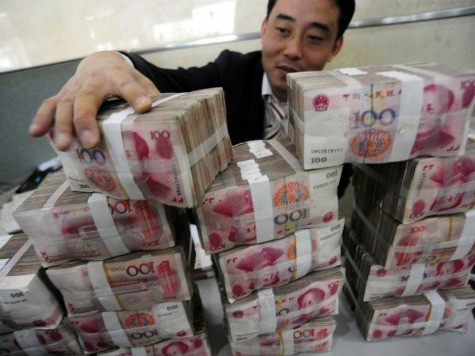On Tuesday, the Commerce Department is expected to report the deficit on international trade in goods and services was $40.0 billion in November, up from $24.9 billion when the economic recovery began.
The Obama Administration’s ill-conceived energy policies and appeasement of China and Japan are responsible for this jump in the trade deficit. Every dollar spent abroad for imported petroleum and consumer goods that does not return to purchase exports is lost demand for U.S. goods and services and slows the pace of economic growth.
The December jump in holiday sales didn’t do much to boost the economy, because the store shelves were stocked with ever more imported goods and profit margins for American firms were very thin. And since the economic recovery began, consumer spending is up 18 percent, whereas the trade gap has jumped 49 percent.
Businesses, consequently, remain hesitant about demand in the U.S. market and are too reluctant to invest. Also, despite favorable changes in U.S. competitiveness thanks to rising wages in China and more abundant, less expensive petroleum and natural gas, U.S. corporate taxes remain among the highest in the world and negate other advantages.
Most service businesses–including those in software and other aspects of IT–and import-competing smaller manufacturers are subject to higher personal, as opposed to corporate rates. Also, more onerous, costly regulations and higher mandated health care costs–thanks to ObamaCare–are driving jobs offshore.
Fracking in the lower 48 states has not produced nearly all the potential new oil and gas available, and a full push on U.S. potential in the Gulf, off the Atlantic and Pacific coasts, and in Alaska could cut import dependence by more than half. Shifting federal subsidies from electric cars, wind, and solar to more fuel efficient internal combustion engines, plug-in hybrid vehicles, and liquefied natural gas in rail and trucking could end U.S. dependence on foreign oil altogether.
Lower natural gas prices substantially improve the international competitiveness of industries like petrochemicals, fertilizers, plastics, and primary metals. However, the Department of Energy’s push to boost liquefied gas exports will handicap growth and create millions fewer jobs than keeping the gas at home for manufacturing and alternatives to diesel in transportation.
China systematically undervalues its currency against the dollar to keep its goods cheap in the United States. China steals technology, subsidizes exports, and imposes high tariffs on imports, while effectively distracting the Obama Administration from these commercial issues with measured intransience on cyber-security and nuclear issues in North Korea.
Other Asian governments, most recently Japan, have adopted similar currency strategies to boost exports. For example, the jump in the value of the dollar against the yen gives Toyota at least a $2,000 advantage pricing the Camry against the Ford Fusion. That may not show up in the list price, but it gives Toyota’s importing arm in the United States the latitude to pack cars with better features and more aggressively discount.
No surprise, the trade gap with Japan is up about 250 percent since the economic recovery began, and the full brunt of the cheap yen policy is yet to be seen.
Economists across the ideological and political spectrum have offered strategies to combat predatory currency policy and force China and others to abandon mercantilism. However, China, Japan, and others, offering only token gestures and deflecting rhetoric, exploit President Obama’s weakness on economic issues–the Obama policy of appeasement is wrecking the U.S. recovery.
Cutting the trade deficit by $300 billion through domestic energy development and conservation and forcing China and others’ hands on protectionism would increase GDP by about $500 billion a year and create well more than 4 million jobs.
Cutting the trade deficit in half would raise long-term U.S. economic growth by one to two percentage points a year. But for the trade deficits of the Bush and Obama years, U.S. GDP would be 10 to 20 percent greater than today, and unemployment and budget deficits not much of a problem.
Peter Morici is an economist and professor at the Smith School of Business, University of Maryland, and a widely published columnist. Follow him on Twitter.

COMMENTS
Please let us know if you're having issues with commenting.